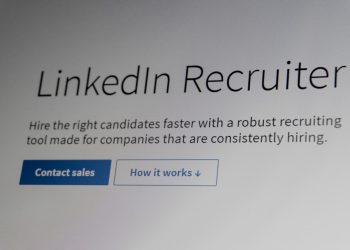No products in the cart.
New Minimum Salary Regulations Impact Work Visas in the U.S.
New minimum salary regulations for U.S. work visas have significant implications for workers and employers. Find out what these changes mean.
Washington, D.C., USA — The U.S. Department of Labor (DOL) has announced significant changes to minimum salary requirements for work visas, a move that could reshape the landscape for foreign workers and employers alike. This announcement, made on October 9, 2025, comes as the labor market continues to evolve in response to economic pressures and workforce demands.
The new regulations will increase the minimum annual salary for H-1B visa holders to $110,000, up from the previous threshold of $100,000. This adjustment reflects the DOL’s aim to ensure that foreign workers are compensated fairly in line with their U.S. counterparts. Additionally, the minimum salary for L-1 visa holders will rise to $115,000, up from $105,000. These changes are expected to take effect on November 1, 2025, providing a brief window for employers to adjust their hiring practices.

Fragomen, a leading immigration law firm, emphasized that these changes are part of a broader strategy to protect U.S. workers while still allowing businesses to access global talent. The firm notes that the increase in salary requirements is also a response to rising inflation and the need for competitive compensation in the technology and healthcare sectors, which heavily rely on skilled foreign labor.
 Business And Entrepreneurship
Business And EntrepreneurshipImpacting the SDGs: Building the Global Economy on Collaboration
Career Ahead “Collaboration is a mindset, and to be successful during this time of disruption, we must recognize that, as…
Employers are now faced with the challenge of navigating these new salary thresholds while also addressing their staffing needs. Many companies, particularly in tech and healthcare, have expressed concerns about the impact of these changes on their ability to recruit and retain talent. A recent survey by the National Association of Manufacturers found that 70% of employers believe that higher salary requirements could deter them from hiring foreign workers, potentially leading to skill shortages in critical industries.
A recent survey by the National Association of Manufacturers found that 70% of employers believe that higher salary requirements could deter them from hiring foreign workers, potentially leading to skill shortages in critical industries.
Furthermore, the DOL’s decision aligns with ongoing discussions about immigration reform and labor market policies in the U.S. Advocates for immigrant rights argue that while higher salaries may benefit domestic workers, they could also limit opportunities for skilled immigrants who are willing to work for lower wages. Critics of the new regulations warn that this could lead to a decrease in diversity within the workforce and hinder innovation.
As businesses adjust to these new salary requirements, they may need to rethink their recruitment strategies. Companies that traditionally relied on H-1B and L-1 visa holders may need to increase their salary offers or explore alternative visa options, such as the O-1 visa for individuals with extraordinary ability. This could ultimately reshape the competitive landscape for talent acquisition across various sectors.
 Career Development
Career DevelopmentIndia Expands Medical Education: 9,075 New NEET UG Seats Approved
India's National Medical Commission has approved 9,075 new seats for NEET UG 2025, significantly expanding medical education opportunities.
Read More →In the short term, employers are likely to see increased operational costs as they comply with the new regulations. However, experts suggest that this could also lead to a more skilled and competitive workforce in the long run. By ensuring that foreign workers are compensated fairly, the DOL aims to foster a labor market that values skill and innovation.
Looking ahead, companies must remain agile in their hiring practices. The ability to adapt to these regulatory changes will be crucial for maintaining a competitive edge in the global market. Employers should consider investing in workforce development programs and training initiatives to upskill their existing employees, thereby reducing dependency on foreign labor.
Employers should consider investing in workforce development programs and training initiatives to upskill their existing employees, thereby reducing dependency on foreign labor.
As the U.S. labor market continues to evolve, staying informed about immigration policies and salary requirements will be essential for both employers and workers. The recent changes underscore the importance of strategic planning in workforce management, emphasizing the need for companies to align their hiring practices with regulatory frameworks.
 News
NewsIndia-UK Young Professionals Scheme: Live and Work in India/UK for 2 years
Career Ahead The United Kingdom and India are set to launch the Young professionals Scheme on February 28th, 2023. This…
Read More →










